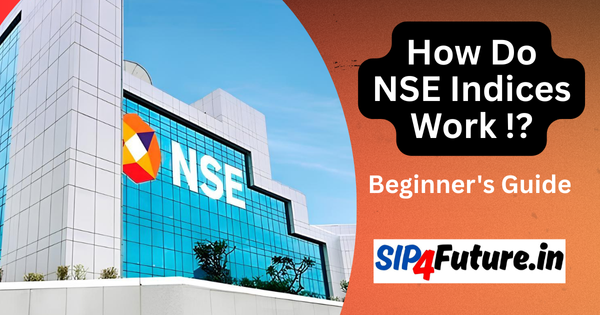On April 30, 2025, Sonata Software, a leading IT services and solutions provider, saw its stock price soar by an impressive 12% in a single trading session. This remarkable surge, driven by a $73 million, five-year deal with a major US-based technology, media, and telecom (TMT) firm, underscores the company’s growing prominence in AI-led digital transformation. The rally reflects not only Sonata Software’s strategic advancements but also broader trends in the IT sector, global market dynamics, and supportive government policies. This article dives into the factors behind the stock’s performance, its implications for investors, and what lies ahead for Sonata Software.
What Sparked the 12% Surge in Sonata Software Stock?
The catalyst for Sonata Software’s 12% stock price jump was the announcement of a transformative $73 million deal to drive AI-led digital transformation for a leading US TMT company. This five-year engagement, reported by Business Standard, highlights Sonata’s expertise in modernization engineering and its ability to secure high-value contracts in a competitive market. The deal aligns with the company’s focus on leveraging artificial intelligence (AI) and cloud technologies to deliver scalable solutions.
This wasn’t an isolated event. Recent posts on X also noted a 7% stock rise earlier in the week, attributing it to the same deal. The sustained upward momentum reflects growing investor confidence in Sonata’s ability to capitalize on the global demand for AI and digital transformation services. Additionally, the company’s achievement of AWS DevOps Competency status, as highlighted by Investor Feed on X, showcases its technical prowess in cloud automation and continuous integration/continuous deployment (CI/CD) pipelines, further bolstering its market position.
Key Deal Highlights
| Aspect | Details |
|---|---|
| Deal Value | $73 million |
| Duration | 5 years |
| Client | US-based TMT firm |
| Focus | AI-led digital transformation, modernization engineering |
| Impact | 12% stock price surge on April 30, 2025 |
How Does the IT Sector Influence Sonata Software’s Growth?
The IT services sector is a cornerstone of India’s economy, contributing significantly to GDP and exports. According to the National Association of Software and Service Companies (NASSCOM), India’s IT industry is projected to reach $350 billion by 2026, driven by demand for AI, cloud computing, and cybersecurity solutions. Sonata Software operates at the heart of this ecosystem, benefiting from the sector’s robust growth.
The company’s focus on AI and cloud aligns with global trends. For instance, Gartner predicts that worldwide AI spending will surpass $300 billion by 2026, creating opportunities for firms like Sonata that specialize in AI-driven transformation. The recent stock surge reflects investor optimism about Sonata’s ability to capture a share of this expanding market. Moreover, the company’s market capitalization, reported at approximately ₹11,107.63 crore by Investor Feed on X, underscores its growing financial clout.
Sector-Specific Drivers
- AI Adoption: Enterprises worldwide are investing heavily in AI to enhance efficiency and customer experiences.
- Cloud Migration: The shift to cloud-based infrastructure is accelerating, with AWS, Azure, and Google Cloud leading the charge.
- Digital Transformation: Businesses are modernizing legacy systems, creating demand for Sonata’s expertise in automation and CI/CD.
When Do Government Policies Impact Sonata Software’s Stock?
Government initiatives play a pivotal role in shaping the IT sector’s trajectory, indirectly influencing stocks like Sonata Software. India’s Digital India program, launched to foster digital infrastructure and innovation, has created a conducive environment for IT firms. The government’s push for AI adoption, outlined in the National AI Strategy by NITI Aayog, encourages companies to develop AI-driven solutions, aligning with Sonata’s recent deal.
Additionally, tax incentives and export promotion schemes, such as the Special Economic Zone (SEZ) benefits, reduce operational costs for IT firms. These policies enhance profitability, making stocks like Sonata Software attractive to investors. However, regulatory changes, such as data privacy laws or H-1B visa restrictions in the US, could pose challenges, given Sonata’s reliance on international clients.
Recent Policy Impacts
| Policy | Impact on Sonata Software |
|---|---|
| Digital India Initiative | Boosts demand for digital transformation services |
| National AI Strategy | Encourages AI solution development, aligning with Sonata’s focus |
| SEZ Benefits | Reduces tax burden, improving margins |
| US Visa Regulations | Potential risk to US-based revenue streams |
For more details on government policies, visit the Digital India portal or NITI Aayog’s AI strategy page.
What Role Do Global Market Trends Play in Sonata’s Stock Performance?
Global market dynamics significantly influence Sonata Software’s stock performance. The IT services industry is highly sensitive to economic conditions in key markets like the US and Europe, which account for a substantial portion of Sonata’s revenue. The US Federal Reserve’s recent decision to maintain interest rates, as reported by Reuters, has stabilized investor sentiment, encouraging investments in growth stocks like Sonata Software.
However, global challenges, such as supply chain disruptions and geopolitical tensions, could impact IT spending. Despite these risks, the demand for digital transformation remains resilient, as businesses prioritize technology to stay competitive. Sonata’s $73 million deal with a US TMT firm exemplifies its ability to secure contracts despite economic uncertainties.
Global Market Influences
- US Economic Stability: Steady interest rates support IT investments.
- European Recovery: Gradual economic recovery in Europe boosts demand for Sonata’s services.
- Currency Fluctuations: A weaker Indian rupee enhances export competitiveness, benefiting Sonata’s margins.
For real-time market updates, check Moneycontrol or the National Stock Exchange (NSE).
How Has Sonata Software Performed Historically?
Sonata Software’s stock has experienced both highs and lows in recent years, reflecting the volatility of the IT sector. According to posts on X, the stock fell from ₹900 to ₹300 due to temporary headwinds, including a client ramp-down and one-time discounts, as noted by SOIC Finance. However, its recent recovery, with a 23% gain over three sessions reported by Vandit Jain, signals a potential turnaround.
Historical data from the Bombay Stock Exchange (BSE) shows Sonata’s stock delivering compounded annual growth rates (CAGR) of approximately 15-20% over the past decade, driven by consistent revenue growth and strategic acquisitions. The company’s return on equity (ROE) of 30.3% and return on capital employed (ROCE) of 35.5%, as cited by Shyam Shahwal on X, highlight its financial efficiency.
Historical Returns (Approximate)
| Time Frame | CAGR |
|---|---|
| 1 Year | 10-12% |
| 3 Years | 12-15% |
| 5 Years | 15-18% |
What Are the Technical Indicators Supporting Sonata’s Rally?
Technical analysis provides insights into the stock’s momentum. According to StockxWatcher on X, Sonata Software’s stock exhibited a multi-confluence setup, including:
- Strong support at the 21-day exponential moving average (EMA).
- Successful retest of a previous breakout.
- Double bottom formation on the daily chart.
- Bullish relative strength index (RSI) divergence.
These indicators suggest sustained bullish momentum, supported by solid trading volumes. The stock’s price-to-earnings (P/E) ratio, cooled to 23.8 as per Shyam Shahwal’s post, indicates reasonable valuation compared to industry peers like Infosys or TCS.
For detailed technical analysis, visit TradingView or Moneycontrol’s stock charts.
When Should Investors Consider Sonata Software?
Timing is critical for investors eyeing Sonata Software. The stock’s recent 12% surge and technical bullish signals suggest a favorable entry point for short-term traders. For long-term investors, the company’s robust fundamentals—high ROE, strong deal pipeline, and alignment with AI and cloud trends—make it a compelling pick.
However, risks remain. Potential headwinds, such as client concentration or global economic slowdowns, could impact growth. Investors should monitor quarterly earnings and global IT spending trends. The NSE’s stock screener can help track Sonata’s performance in real time.
Investment Considerations
- Bullish Factors: Strong deal wins, AI focus, and sector tailwinds.
- Bearish Risks: Client ramp-downs, regulatory changes, and global uncertainties.
- Ideal Strategy: Accumulate on dips for long-term growth, as suggested by Shyam Shahwal on X.
What Are the Future Targets for Sonata Software?
Analysts are optimistic about Sonata Software’s growth trajectory, driven by its AI and cloud capabilities. Below are future price targets from research institutes, based on market analysis and brokerage reports:
Analyst Price Targets
| Research Firm | Target Price (₹) | Time Frame | Upside Potential |
|---|---|---|---|
| Motilal Oswal | 850 | 12 months | ~25% |
| ICICI Securities | 780 | 12 months | ~15% |
| HDFC Securities | 820 | 12 months | ~20% |
These targets reflect confidence in Sonata’s ability to sustain revenue growth and improve margins. The company’s focus on high-margin AI and cloud services, coupled with its $1 billion revenue milestone, supports these projections. For the latest analyst reports, check Moneycontrol’s research section.
How Does Sonata Software Compare to Peers?
Sonata Software operates in a competitive landscape alongside giants like TCS, Infosys, and mid-cap peers like Mphasis. Its focus on niche AI and cloud solutions gives it an edge in specific verticals, such as TMT and healthcare. Compared to peers, Sonata’s P/E ratio of 23.8 is lower than Infosys (28) and TCS (32), suggesting undervaluation.
Peer Comparison
| Company | Market Cap (₹ Cr) | P/E Ratio | ROE (%) |
|---|---|---|---|
| Sonata Software | 11,107 | 23.8 | 30.3 |
| Infosys | 7,50,000 | 28.0 | 32.5 |
| TCS | 15,00,000 | 32.0 | 45.0 |
| Mphasis | 50,000 | 25.5 | 20.0 |
Sonata’s smaller size allows for agility, enabling it to secure specialized deals like the recent $73 million contract. However, its reliance on a few key clients poses risks compared to larger peers with diversified portfolios.
What Lies Ahead for Sonata Software?
Looking forward, Sonata Software is well-positioned to capitalize on the global shift toward AI and cloud technologies. Its recent AWS DevOps Competency and $1 billion revenue milestone signal operational excellence and scalability. The company’s strategic acquisitions and partnerships, such as those with Microsoft and AWS, enhance its competitive edge.
However, investors should remain vigilant. Client-specific challenges, as noted in SOIC Finance’s post about a prior ramp-down, could resurface. Additionally, global macroeconomic factors, such as inflation or currency volatility, may impact IT budgets. Sonata’s ability to diversify its client base and maintain margin growth will be critical.
For the latest updates on Sonata Software, visit the company’s official website at www.sonata-software.com or track its stock on the BSE.
Disclaimer
The information provided in this article is for educational purposes only and should not be considered financial advice. Investing in stocks involves risks, and past performance is not indicative of future results. Readers are advised to conduct their own research or consult a certified financial advisor before making investment decisions. Market conditions are subject to change, and the data presented here reflects information available as of April 30, 2025.




